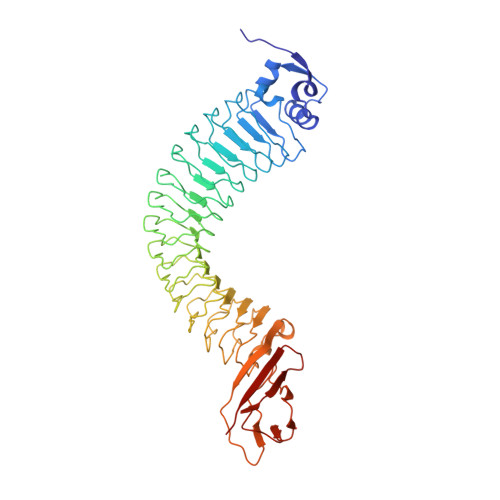Crystal structure and standardized geometric analysis of InlJ, a listerial virulence factor and leucine-rich repeat protein with a novel cysteine ladder.
Bublitz, M., Holland, C., Sabet, C., Reichelt, J., Cossart, P., Heinz, D.W., Bierne, H., Schubert, W.D.(2008) J Mol Biol 378: 87-96
- PubMed: 18343406
- DOI: https://doi.org/10.1016/j.jmb.2008.01.100
- Primary Citation of Related Structures:
3BZ5 - PubMed Abstract:
We report on the crystal structure of the internalin domain of InlJ, a virulence-associated surface protein of Listeria monocytogenes, at 2.7-A resolution. InlJ is a member of the internalin family of listerial cell surface proteins characterized by a common N-terminal domain. InlJ bears 15 leucine-rich repeats (LRRs), the same number as in InlA, the prototypical internalin family member. The LRRs of InlJ differ from those of other internalins by having 21, rather than 22, residues and by replacing 1 LRR-defining hydrophobic residue with a conserved cysteine. These cysteines stack to form an intramolecular ladder and regular hydrophobic interactions in consecutive repeats. Analyzing the curvature, twist, and lateral bending angles of InlJ and comparing these with several other LRR proteins, we provide a systematic geometric comparison of LRR protein structures (http://bragi2.helmholtz-hzi.de/Angulator/). These indicate that both cysteine and asparagine ladders stabilize the LRR fold, whereas substitutions in some repeat positions are more likely than others to induce changes in LRR geometry.
Organizational Affiliation:
Molecular Host Pathogen Interactions, Helmholtz Centre for Infection Research, Inhoffenstr. 7, 38124 Braunschweig, Germany.
















